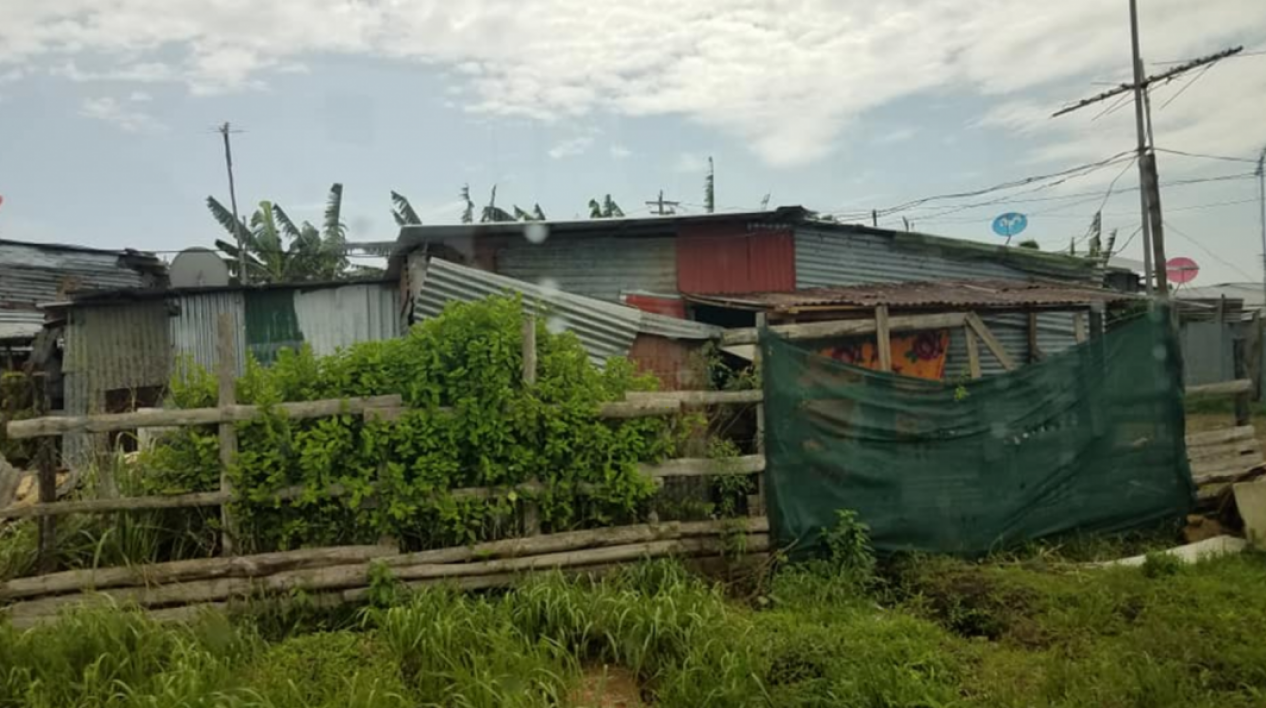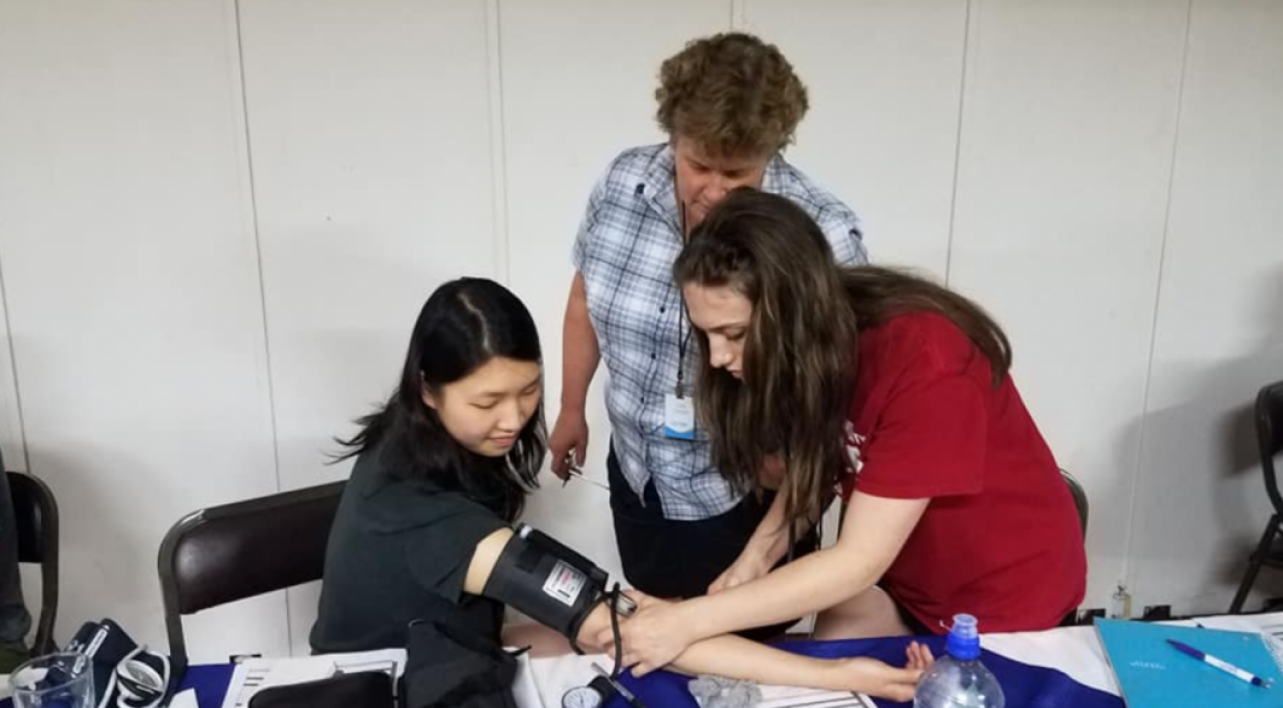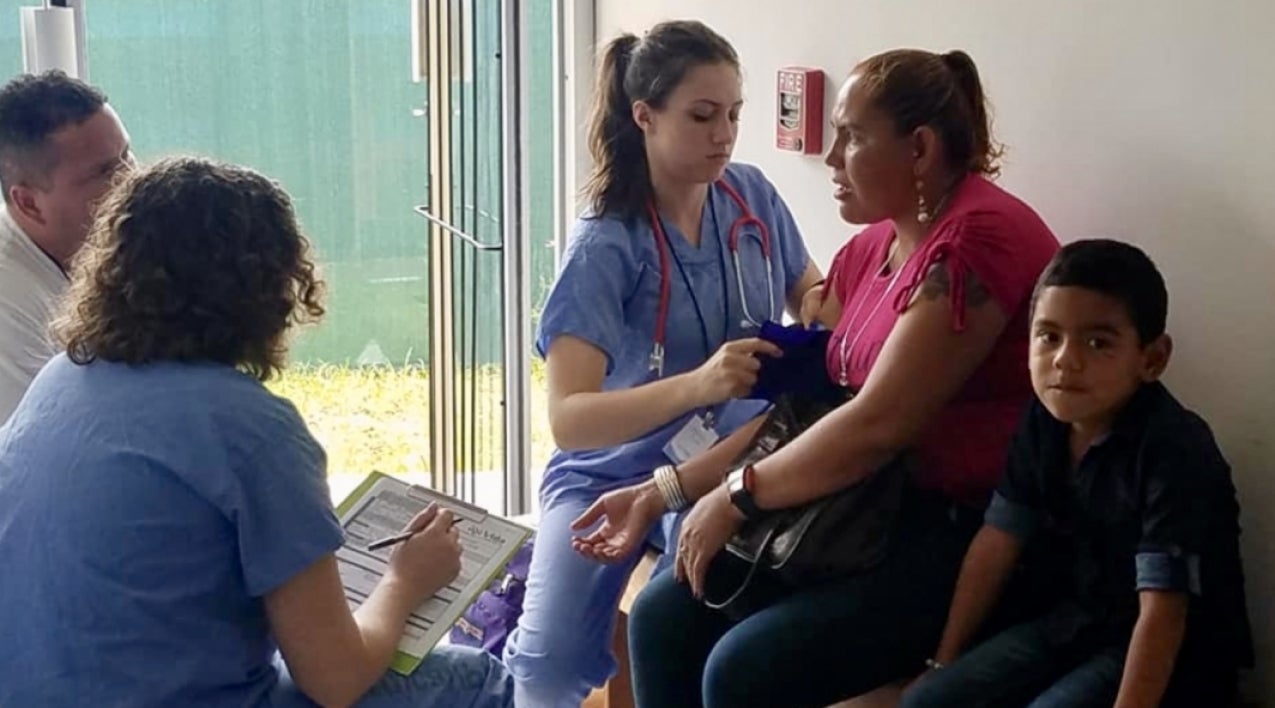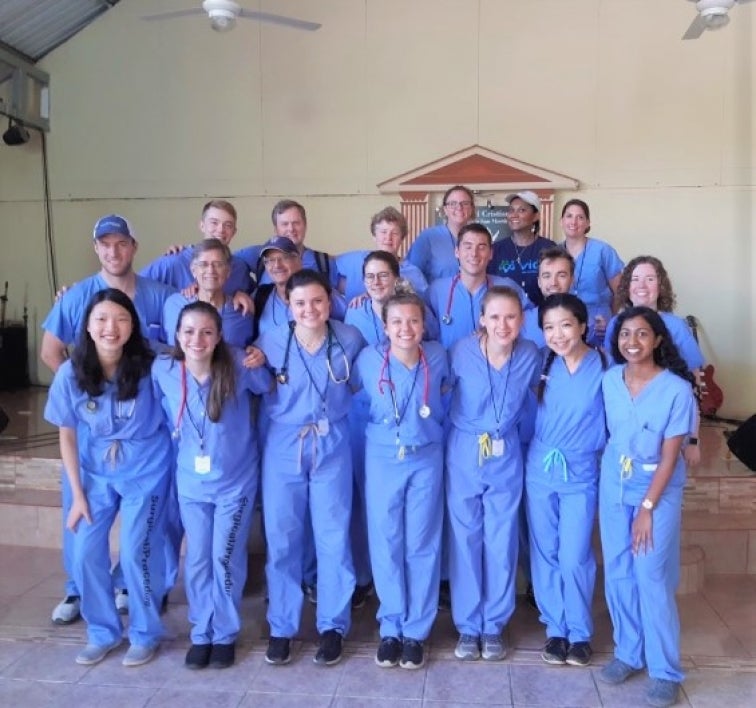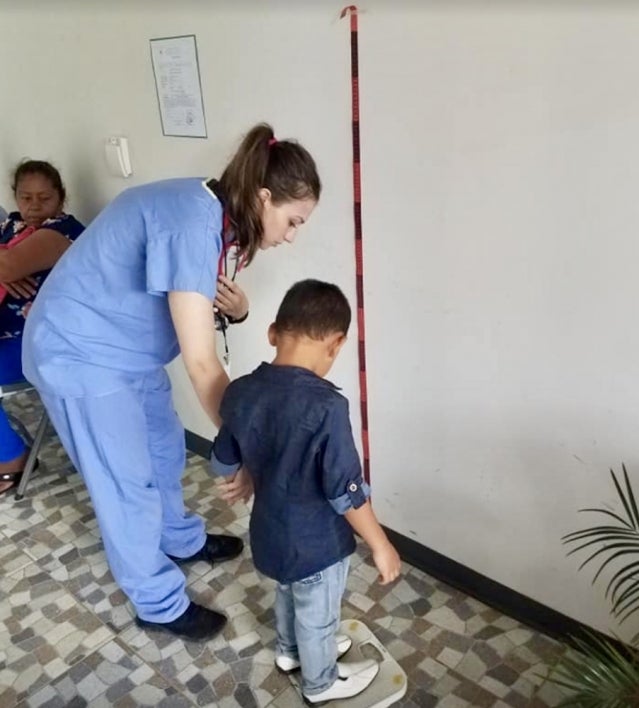ASU student assists Mayo Clinic's Vida Volunteer medical mission in Costa Rica

The Mayo Clinic Vida Volunteer Team, 2019
Dr. Joseph Furst, a Mayo Clinic physician, annually spends two weeks in the summer providing medical care to at-risk communities in other countries. In 2017, ASU students were invited to participate in a medical brigade to Nicaragua. This year, Furst led students to Nicoya and La Cruz, Costa Rica, as part of the Vida Volunteer program.
Selected through ASU’s Pre-Health Internship Program in the Office of Clinical Partnerships, student Whitney Tuoti — a major in biochemistry and biological sciences in The College, and a Barrett, The Honors College student — traveled with Mayo Clinic physicians and medical students to provide medical support and health education.
"Due to her promising character, Whitney was selected by leadership at Arizona State University to receive a scholarship to travel with us," Furst said. "I have been involved in a number of missions and had not encountered an individual with the degree of passion Whitney had to serve."
Tuoti was one of eight pre-medical students traveling on the mission. Alongside undergraduate students from Harvard, UCLA, University of Maryland, and University of Wisconsin, she was able to conduct home visits and assist providers in clinic. During the two-day clinic, over 170 patients were seen by the team.
Compared to previous brigades in Nicaragua, the needs of the Costa Rican patients were different. All children have health insurance until they are 18. After that, it’s more spotty, and insurance doesn’t always mean access due to barriers such as travel. The water quality where the group served was better also. The goal of the trip was to help students understand the nature of mission work and differences in health care abroad, as well as to directly provide care.
Tuoti also participated in workshops and presentations. Dr. Mark Williams, a Mayo Clinic physician, has an interest in the interface between primary care and mental health. Williams' workshop notes that within Costa Rica, the city of La Cruz was one of 15 communities with the highest suicide rates. His presentation to local providers focused on suicide awareness and prevention. The team then visited selected families in rural areas to assess their general living conditions and family dynamics as part of a multidisciplinary intervention.
"I saw three families during our family visits," Tuoti said. "The village we visited was filled with homes that were made of bits and pieces of metal and wood. To have a home made out of solid materials — as we have here in the United States — is considered luxurious and wasn’t a sight seen in this village. The first family we visited was a 27-year-old mother of five children. The only medical attention the young mother had ever received was in preparation to give birth. Often, that was the dilemma with some of these families in Costa Rica; the women had so minimal assistance that they forget to take care of themselves."
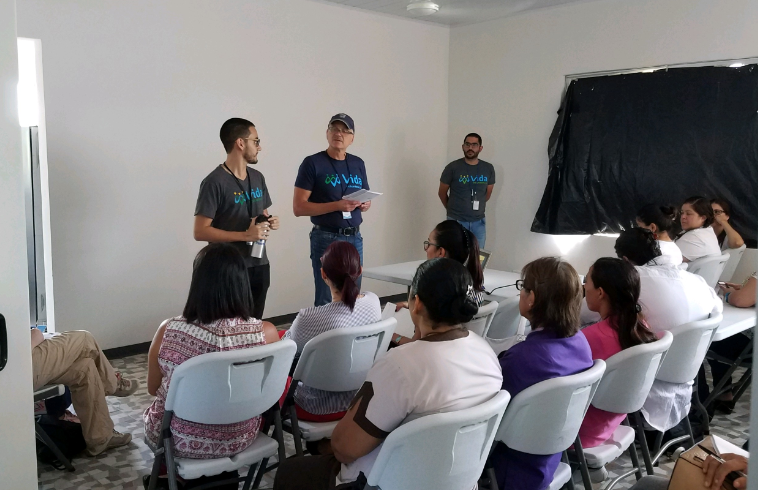
Dr. Furst and the physician team giving presentations on workshop days
Tuoti describes her experience as an opportunity for growth and learning where she was able to receive advice and encouragement about her medical career path.
"Today I met a young girl and her grandmother," she said. "The girl walked into our clinic with a summer dress. I couldn’t help but to notice how thin the girl appeared to be. Her cheeks were caved inwards, and her dress hung loosely on her body. She told us she was 12 years old. I remember thinking to myself that there could be no way. Upon questioning, we learned that she was unable to eat more than a few spoonfuls of food each meal for her entire life. The truth of the matter is no provider has ever taken the time to thoroughly explain the importance of proper nutrition to these families. I realized that by just spending the time to sit down and talk to these patients, it made a positive impact in the future of their health," Tuoti said.
More Health and medicine

The science of sibling dynamics: Why we fight, how we relate and why it matters
We have Mother’s Day, Father’s Day and even Grandparents’ Day. But siblings? Usually they get a hand-me-down sweatshirt and, with…

New study seeks to combat national kidney shortage, improve availability for organ transplants
Chronic kidney disease affects one in seven adults in the United States. For two in 1,000 Americans, this disease will…

New initiative aims to make nursing degrees more accessible
Isabella Koklys is graduating in December, so she won’t be one of the students using the Edson College of Nursing and Health…


